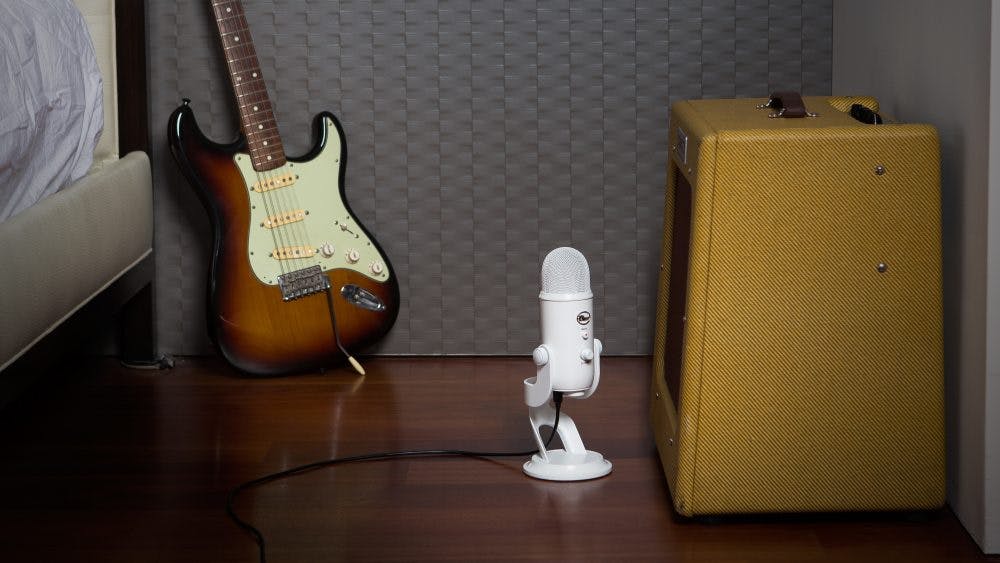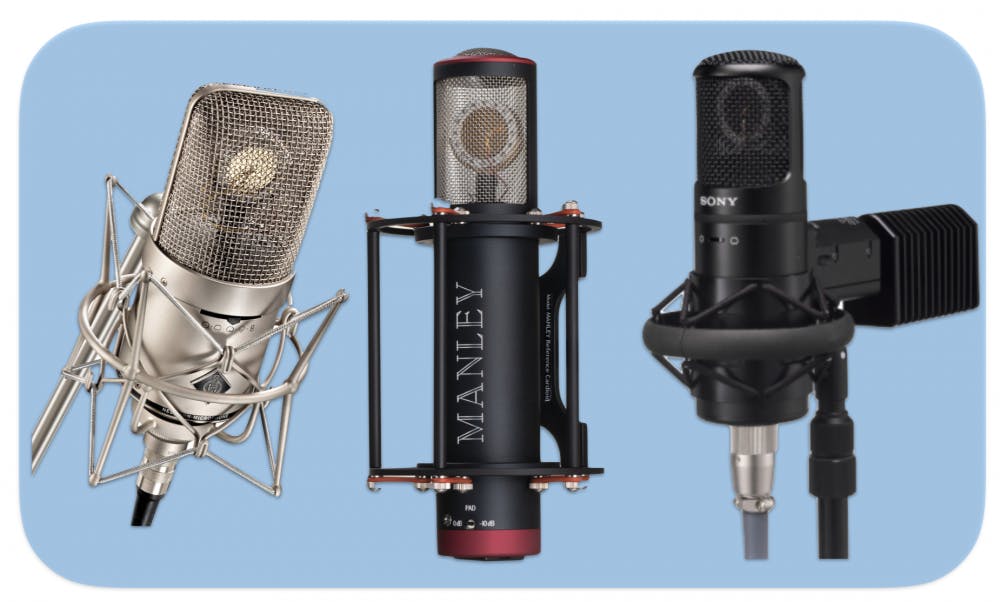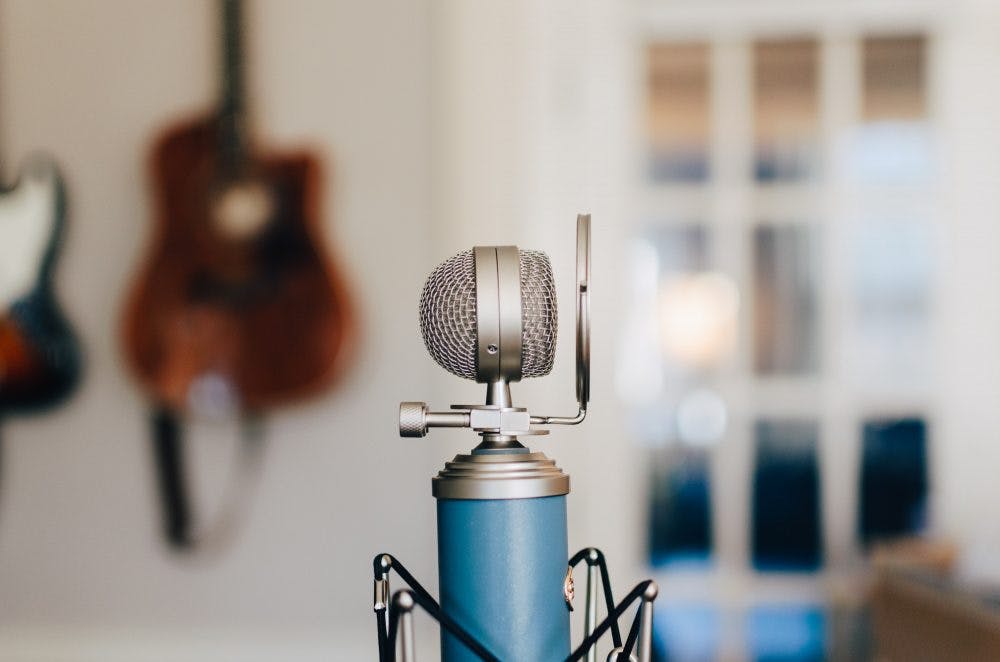This topic may seem obvious, but recent innovations require that we rethink this discussion. Never before have there been so many valid options and also such diverse feature sets among the available microphone choices. I recently visited a local retail electronics/appliance chain store and I was surprised to see microphones on their shelves that I would actually use in my studio for music recording, podcasting, and video productions. These low-cost microphones serve consumers well but will also fit the bill for professional users in certain applications.
Choosing a microphone entails a certain amount of understanding microphone types and applications, but instead of organizing mics by their technical descriptions, this article will organize mics in a more thoughtful way— by price range. We won’t get deep into the technical considerations of microphones, which is an entire study unto itself, but we will consider which microphones are worth considering at various price points. Cost doesn’t define the usefulness or musical quality of a mic, but it does play into build quality and features that make each price point unique and worth consideration.
A quick reminder about microphone types. Dynamic mics do not require phantom or battery power. They are rugged and handle loud sound sources very well. Condenser microphones are more sensitive to softer sounds, require phantom power, and may be more fragile than dynamic mics. Both types produce excellent results and are equally common. Ribbon mics fall under the dynamic category and tube mics fall under the condenser category.
One consideration that we will largely ignore for this article is the option of large vs. small diaphragm mics. In general, small-diaphragm mics are technically more sonically accurate while large-diaphragm mics can provide more desirable sonic coloration and, surprisingly, a lower noise floor. Dynamic mics usually have medium-sized capsules and many USB and inexpensive condenser mics use medium-sized condenser capsules. As an all-purpose mic, I would simply recommend starting with a large-diaphragm mic and adding a small diaphragm option down the road, when you need more mics or desire more sonic options.

USB mics [$75 – $300+]
USB microphones have erupted in availability over the last year, especially as the popularity of videoconferencing, podcasting, and vlogging has grown. USB mics offer simplicity, a large feature set, and excellent sound capture for dialog. In addition to spoken voice, USB mics may work OK for instrumental and vocal recording, but they typically have a limited ability to handle really loud or soft sources.
Expect respectable audio quality with a sound tailored to help your speaking voice sound great. Don’t expect extremely high fidelity or extremely loud headphone outputs. USB microphones are powered through the USB connection and contain built-in preamps and converters, so no mic preamps or audio interfaces are needed. Your computer will also route its audio output to the mic’s built-in headphone jack, so you can simply plug your headphone into the mic to hear your audio. USB mics are not compatible with outboard signal processors, like compressors, so any dynamic control or tone shaping must be done after recording.
Respected studio mic manufacturers as well as consumer electronics companies produce USB mics. A USB mic’s price may not dictate its features but more expensive USB mics will provide higher build quality and often more accessories. Some USB mics provide selectable pickup patterns, onboard DSP to reduce background noise, and even rechargeable batteries and built-in SD cards for recording while away from the computer.
USB Mic Pros:
- No need for an audio interface These mics provide a USB output and a headphone jack.
- Excellent audio quality usually optimized for speech recording.
- Many USB mics have built-in desk stands or tripods. Others provide a standard mic stand mount.
USB Mic Cons:
- Don’t expect the wide dynamic range or low noise-floor needed for high-quality music production.
- USB mics usually limit your use to one microphone at a time.
- USB mics can’t be taken out for live performances and may not integrate with sound systems other than directly to a computer.
- Construction quality and durability may be poor with consumer-priced microphones.

XLR Microphones
Studios and live sound systems rely on microphones with XLR connectors—the three-pin connector on standard mic cables. Specialty microphones, such as harmonica mics which are meant to plugin into guitar amps, may come with a ¼” output, but those are rare and not typical. XLR microphones require a mic preamp, mixer, or audio interface in order to get their signal into your computer and some mics require phantom power, which is also provided by the mic preamp or interface.
Inexpensive Mics [$50 – $400]
Great-sounding microphones don’t need to be expensive. Consider that the standard live performance vocal mic (Shure SM58) costs $99. Dynamic mics dominate this category and provide ruggedness and durability that can’t be beaten. Dynamic mics typically provide only a cardioid or super-cardioid pattern and work well on almost any instrument, except extremely quiet sources. Their directional pattern works well to keep unwanted sounds out of the mic, like stage bleed for live sound and household noises for home recording.

Condenser mics in this lower price range sacrifice materials and quality to keep their price down, although some manufacturers, like Audio-Technica, Rode, sE Electronics, and Blue Microphones produce great-sounding inexpensive mics that borrow technology from their more expensive brethren. Typically inexpensive condenser mics produce a hyped sound that seems impressive at first, but often contains high levels of distortion and resonant frequencies that you may grow tired of as you become more experienced. That said, many excellent condensers sell for $400 or less.
Pros:
- Dynamic microphones are rugged and durable and provide excellent rejection of unwanted sounds.
- You can purchase an assortment of inexpensive mics tailored to various instruments and spend less than a single high-end microphone.
- As you grow, you may start collecting more mics and these mics will remain an important part of any good mic collection.
Cons:
- These mics, as opposed to USB mics, require a mic preamp, mixer, or audio interface.
- Inexpensive condenser mics may sacrifice some quality to meet a price point.
- While inexpensive dynamics mics are sturdy, inexpensive condenser mics tend to be more fragile than more expensive mics.
- Dynamic mics require a bit more gain (better preamps) than condensers but condensers require phantom power.
Mid-priced mics [$400 – $2000]
This price range contains specialty dynamic mics, including ribbon mics, and all kinds of condenser mics. At the low-end of this range, you’ll find excellent build-quality and a good variety of tonal options. At the high end of this price range, you will come across legendary and world-class microphones. Many of these mics provide features like variable pickup patterns, high-pass filters, and built-in pads.
Microphones towards the high-end of this price range contain superior electronic components that minimize unwanted distortion and lower the self-noise of the microphones. These qualities may not matter for an online conference call or a podcast recording, but for professional voice and music recordings, these qualities are a must.
This price range also contains high-end ribbon microphones and tube condenser microphones. You can also expect carrying cases and decent shock-mounts to come with these mics. They will require you to provide a mic stand and XLR mic cable.
Pros:
- These mics provide higher quality build and sonics than the low-priced mics.
- World-class professional-quality mics are available in this price range.
- These mics usually include a carrying case and shock mount.
Cons:
- The low-end of these mics may be mass-produced and suffer from poorer quality control than the higher-end mics of this category.
- Mics in this price-point often try to emulate classic, expensive microphones but may suffer the same sonic problems of the less expensive mics.
- Some expertise is beneficial in using the more specialized features of some of these mics.

Expensive mics [$2000 – $6000+]
In this price range, every microphone is a great mic and some microphones are tailored to flatter certain sonic qualities. For instance, a Sony C-800G ($10,000+) is considered an excellent vocal mic by many, but on some voices, it can be too bright or even harsh. Similarly, the Royer SF-24 stereo ribbon mic ($4,200) may sound sweet on a string quartet, but prove to be a bit dull for rock piano.
This price range covers condenser mics, tube mics, and specialty mics like stereo or soundfield microphones and measurement microphones. Mics at these prices will include a briefcase, shock mount, and maybe even their own cable. Most of these microphones are hand-built with excellent quality control, so you can trust what you are paying for. Anyone looking to purchase a mic in this price range should already be familiar with the type, make, and model that they desire. Renting these mics or booking some time at a local studio that owns these mics is worth the expense before such a large investment. Additionally, an owner of a high-priced mic will likely already possess other useful, but less costly microphones.

Mics to Consider for Your Locker
Below are some of the more popular microphone options in each price range. Literally hundreds of companies produce excellent microphones so this list is just a sampling of what is commonly available from typical retail music stores and pro audio dealers.
USB mics:
Audio-Technica 2020USB – A well-built USB version of Audio-Technica’s versatile AT2020.
Blue Yeti – A favorite for podcasting and audiobook recording.
Shure MV7 – The USB version of Shure’s venerable SM7B broadcast and vocal mic.
Rode Podcaster – An excellent-sounding affordable mic for voice.
Low-cost dynamic mics:
Shure SM57 and SM58 – Legendary studio and stage microphones.
Telefunken M80 and M81 – High-performance studio and stage dynamic mics.
sE Electronics X1-R – a ribbon mic suitable for voice and instruments.
Low-cost condenser mics:
Rode NT1-A or NT100 – Well-built, versatile, modern condenser mics.
Audio-Technica 4040 – Above-average performance at an exceptional price.
Shure SM27 – Extremely versatile mic from a respected name in mics.
AKG C214 – The affordable little brother to the legendary AKG C414.
Mid-level mics:
Rode NTK (tube) – Low-cost tube mic that’s great for voice and guitar.
Neumann TLM102 and 103 – Modern vocal standard, cardioid only.
Telefunken TF11 – Lower-cost solid-state alternative to the legendary (and pricey) C12 tube mic.
AKG C414 – Legendary all-around mic. Available as XLS (neutral tone) and XLII (brighter tone)
Soyuz Bomblet 012 – Hand-made, classic-sounding, solid-state mic.
Sony C-100 – Extremely versatile and modern design. Quickly becoming a modern legend.
Blue Microphone Bottle Rocket – Affordable class-A solid-state mic with many capsule options.
JZ Vintage 67 – Extremely clean and neutral sounding with a modern design.
Royer 121 (ribbon) – The modern standard studio ribbon. Works on everything.
Expensive mics:
Neumann U87Ai – Perhaps the most well-known vocal mic. Great on instruments, too.
Neumann M149 – World-class modern tube mic for vocals and everything else.
Manley Reference Cardioid – A modern classic vocal mic.
Blue Bottle – The modern version of a 1950s legend. Lots of capsule options.
Telefunken ELA-M 251e – Many say the best vocal mic ever. Made since 1960.
Sony C800G – Sony’s flagship vocal mic.
Royer SF-24V (ribbon) – The pinnacle of ribbon microphones.
Microtech Gefell CMV 563 – In production since 1956. A classic vocal mic.
Additional Reading




